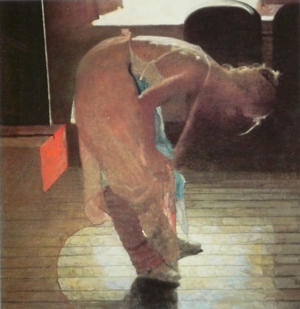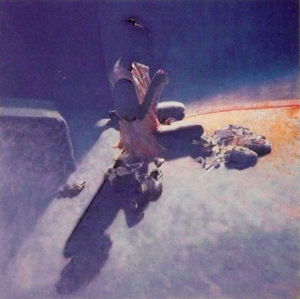To Draw or Not to Draw,
That is the Question.
Do you feel learning to draw is just an unnecessary side trip on the road to painting?
Kind of like having to visit great Aunt Matilda on the way to Disneyland?
Might even mentioning the word "drawing" elicit feelings of distaste, fear or frustration?
Seemingly for many beginning artists, it does. Especially older adults who may be creating art for the first time, drawing may seem like an impossible task.
Or drawing may simply seem like a waste of time, when all they really want to do is paint a picture.
I mean, why waste time drawing a bunch of dorky lines when the siren song of color is calling you?
Well, at the risk of being the hair in your soup, let me suggest that, if you feel this way, your definition of drawing may need revising.
My Definition of Drawing
I would suggest your thoughts about drawing should include the following:
First, good painting depends first and foremost on good drawing.
Second, drawing is not just the making of lines. Drawing is making all the parts of your subject the right size, the right shape and putting them in the right place. Whenever you paint, you are also drawing.
In this definition, the absolute core of drawing is learning to see like a true artist. By learning to see, you train your eyes to recognize shapes and proportions correctly and you train your hands to correctly transfer those shapes and proportions to paper or canvas.
I mean, if you are doing someone's face, you want to make that person's features appear to be the right size and the right shape and in the right places. Otherwise, you end up with an unintentional Picasso portrait.
Sorry, Pablo, no criticism intended.
But, really, if you choose not to learn to draw, you may as well do as a fellow art school student told me many years ago. He said, "I paint abstractly, because I can't draw." I was astounded and wondered if he really couldn't draw or wasn't taught very well.
All You Have To Lose Are Your Chains
To my mind one of the great benefits of really learning to draw is that it helps free your creativity and your imagination.
You see, often aspiring artists in their beginning years are slaves to what they see in front of them, be that a photograph or actual people or objects.
I was in my beginning years and I doubt my experience is much different than yours.
But once you start training your eyes to see shapes and proportions like an artist and train your hands to execute your ideas, you are less chained to reality.
You aren't dependent on what your photograph shows.

You aren't dependent on drawing lines and carefully painting within those lines.
In fact, the lines (the edges of the object) can become completely obscured as you paint and you will still know where they are.
Look at these paintings by artist Robert Heindel.
Robert worked almost exclusively from photographs, but you can tell he knew how to draw very well.
Even though much of the figure in each painting is only suggested, everything you do see is the right size, the right shape and in exactly the right place.
And knowing how to draw well allowed his imagination the freedom to create ingenious designs that went well beyond what his photographs showed him.
At this point you may be saying to yourself "Oh, I could never create something like that." Or maybe you're thinking, "Yeah, but I don't have that kind of talent."
How do you know how proficient and creative you can really be until you've had the kind of training that will nurture those capabilities?

Let me use Robert Heindel as an example.
It might surprise you to learn that he began his art career very humbly by answering one of the old "Draw Me" magazine advertisements for the Famous Artists School correspondence courses.
That's right; he began his career by taking art classes through the mail.
It is my belief that you probably have more ability than you give yourself credit for.
So much of what looks like talent is the willingness to try.
With a willingness to try, to strive, I'm willing to bet you can develop your talents and imagination much further than you may believe.
In fact, it's that belief that made me develop The Shapes of Things: The Secrets to Drawing and Painting Almost Anything online course. Based in my 40 years of rather unique art experience, I will teach you the lessons in creating art that simply aren't taught anywhere else.
I created this course with four purposes in mind. It is part learning to see like an artist, part learning to draw and paint what you see and part learning to free and develop your imagination. Click here to learn more.
I believe it is only by stimulating your creative abilities, your imagination, along with mastering the skills to execute your idea, that you will create art that is totally unique to you.
What it takes for that to happen is a willingness to try, a desire to go for it.
If you truly have that willingness, I invite you to click here to learn more about The Shapes of Things: The Secrets to Drawing and Painting Almost Anything online course.
Here's my wish for your future. I would love to see you develop into the next Robert Heindel.
Best Wishes,
Gary Gumble
Founder of www.beginningartist.com
Without art the crudeness of reality would make the world unbearable. (George Bernhard Shaw)

If you enjoyed this article, pass it along to your friends or have them join my list so they get a copy for themselves every week. Click here to join my list.

If you truly have dreams for your art, you know that the only way of reaching them is by taking that first step. And I want to help you get there. Learn more about The Shapes of Things: The Secrets to Drawing and Painting Almost Anything.